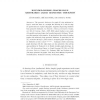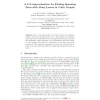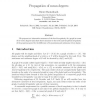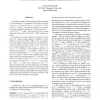44 search results - page 2 / 9 » Lower bounding the boundary of a graph in terms of its maxim... |
COMBINATORICS
2006
13 years 5 months ago
2006
Abstract. The geometric thickness of a graph G is the minimum integer k such that there is a straight line drawing of G with its edge set partitioned into k plane subgraphs. Eppste...
WAOA
2007
Springer
13 years 11 months ago
2007
Springer
For a connected graph G, let L(G) denote the maximum number of leaves in a spanning tree in G. The problem of computing L(G) is known to be NP-hard even for cubic graphs. We improv...
ESA
2004
Springer
13 years 10 months ago
2004
Springer
Edge contraction is shown to be a useful mechanism to improve lower bound heuristics for treewidth. A successful lower bound for treewidth is the degeneracy: the maximum over all ...
COMBINATORICS
2004
13 years 5 months ago
2004
We propose two alternative measures of the local irregularity of a graph in terms of its vertex degrees and relate these measures to the order and the global irregularity of the g...
FOCS
2006
IEEE
13 years 11 months ago
2006
IEEE
An additive spanner of an unweighted undirected graph G with distortion d is a subgraph H such that for any two vertices u, v ∈ G, we have δH(u, v) ≤ δG(u, v) + d. For every...




